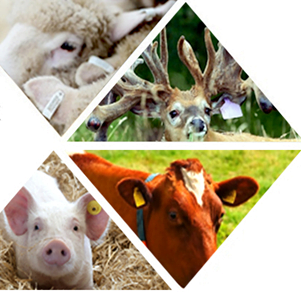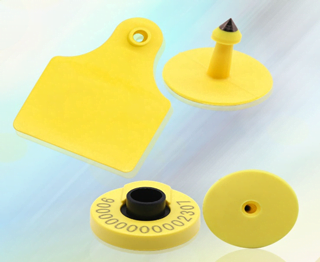
Livestock are movable assets. Unlike other goods, these stocks do not remain static at one place. Therefore, their identification and continuous monitoring becomes a challenging and time-consuming process. To overcome these challenges, farmers and livestock owners around the world use ear tags to identify and manage their livestock and other animals. Many countries have made it a mandate to use ear tags for the livestock to reduce the time and cost involved in the livestock management. It is easier to identify and monitor the cattle with a tag.
What is an ear tag?
An ear tag is a plastic or metal object that carries an identification number on it and is placed in the ears of an animal. The new Electronic Identification Tag (EID) uses Radio Frequency Identification Device (RFID) technology for more efficient livestock management. These electronic tags use the EID number or the management number on the button that is placed at the back of the animal’s ear. The information on the tag is read and stored with the help of radio waves.
Why do farmers use RFID ear tags?
Farmers and livestock producers find it difficult to locate and monitor the activities of their live stocks because the process is time-consuming as well as costly. Therefore, they put tags on their animals to help them identify and monitor the stocks easily. The tags also track their cattle’s performance and monitor their health. These records ensure proper feeding, vaccinating and movement of animals in the farm. And, also help farmers in taking timely and correct decisions about selling the cattle when they are no more required at the farm.
How is an ear tag applied to the animal?
An ear tag carries the fifteen-digit unique Animal Identification Number (AIN) along with few other details like Property Identification Number. The AIN consists of a 3-digit company code and rest 12-digit individual animal number. It can be applied by hand or by an ear tag applicator. An animal can be tagged on one ear or both, depending on the purpose of the tagging. The button like RFID chip is fixed to the ear in a process similar to the piercing of human ear. An ID reader is used to scan and collect the data from these tags, which is then downloaded and stored in a computer. This process reduces chances of error and keep a record of all the data related to an animal at one else.
Advantages of RFID tags
RFID tags are used for many purposes like owner verification, monitoring the health of the animal, tracking medical history, and more. These tags can be used for many applications including farming and laboratory research. Even pet owners can use these tags for the safety of their pets. RFID tags give you the following advantages over other tags.
1. Country Tracking Regulation: Many countries have made it mandatory to use the RFID ear tags in order to quickly trace an outbreak of livestock diseases. The traditional, non-electronic tracking system can take several months to trace such outbreaks.
2. Lifetime Application: RFID ear tags stay attached on the animal for the lifetime and don’t fall out or become unreadable when covered in dirt or mud. Most of these tags are waterproof and shock-resistant. The RFID tags make farm management easy and less time-consuming.
3. Easy implementation: The RFID tags are button like chips placed in the ear of the animal. Each tag has a unique identification number printed on it that can be easily scanned through an EID reader. No paperwork required. All process is computerized improving the accuracy of the data. Unlike visual tags, RFID tags can be scanned even from a distance and does not require the animal to stand still, or a visual contact between reader and the tag. RFID tags are more secure and minimize the chances of any error.
4. Cost effective: RFID ear tags are cost effective and more efficient. Their long-lasting feature makes them cheaper than other tags that need to be replaced due to wear and tear and falling off the animal. The technology requires less human intervention. Hence, reduces the cost of manpower too.
5. Easy monitoring: Farmers and Livestock owners can monitor the health of their cattle from birth till slaughter. Keep a check on any animal disease, track animal movement without disturbing them and record their transportation from one single device.
RFIDHY ear tags come in different frequencies from 134.2 KHz, 125 KHz to as low as 860 MHz and 960MHz. These waterproof and shock-resistant RFID tags are designed in a way to implement the technology efficiently and hassle-free. With a 100% performance guarantee, RFIDHY’s ear tags last for the lifetime of the animal. The electrical parts of the RFIDHY Ear Tags are covered by TPU material which is convenient and strong in the harsh environment too. RFIDY gives you the advantage of choosing the ID numbers as per your requirement. You can also choose your color and the content that you want to print on the tags. These ISO-11784/11785 certified tags come with a three-year guarantee. These tags are recommended for Livestock Management, Livestock Tracking, Pet and Lab Identification, Animal Breeding, Plant, and Food Safety Management.

RFID ear tags are the most economical and efficient technological solution for identification and monitoring of livestock. These ear tags are being widely used by the farmers across the world as per the country regulations.





